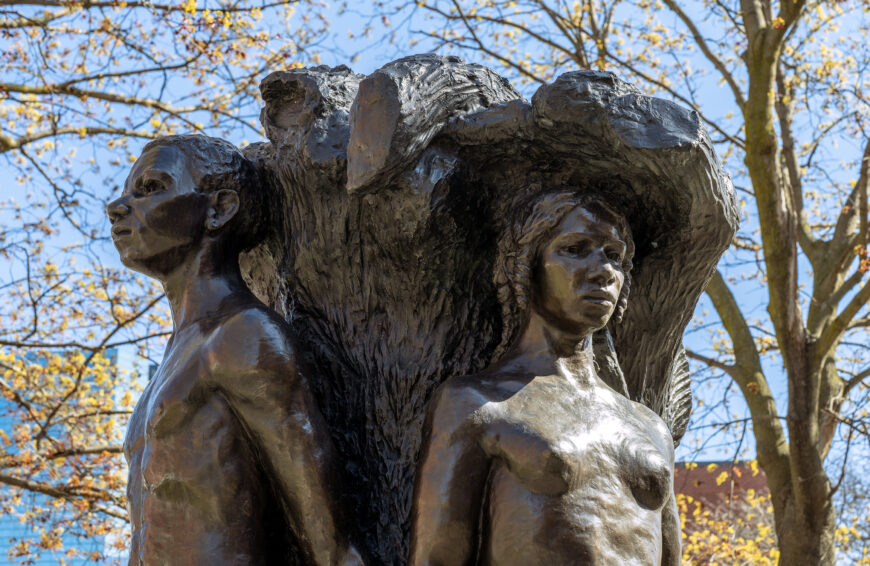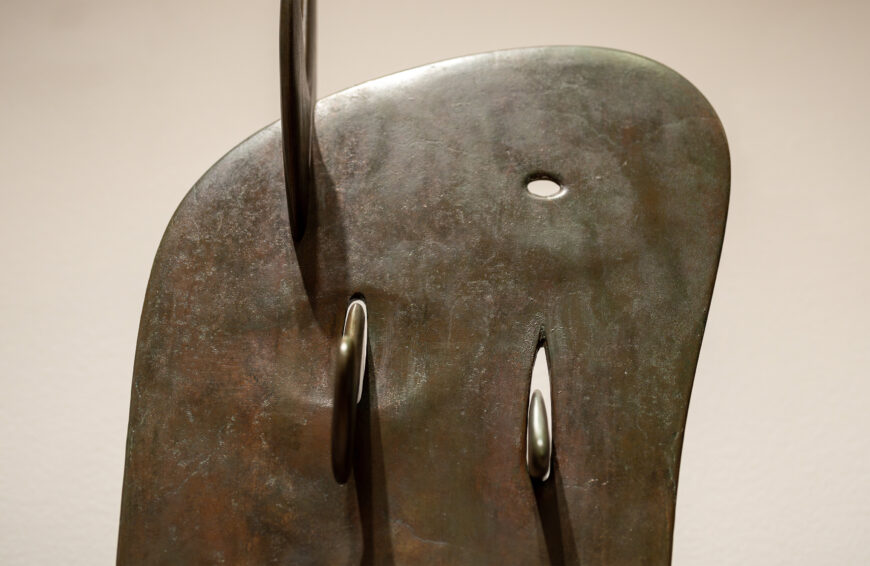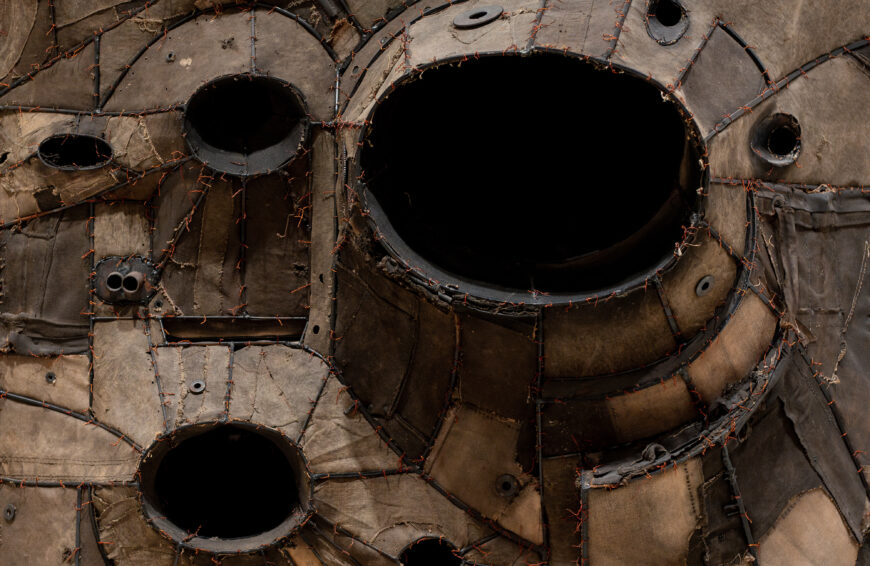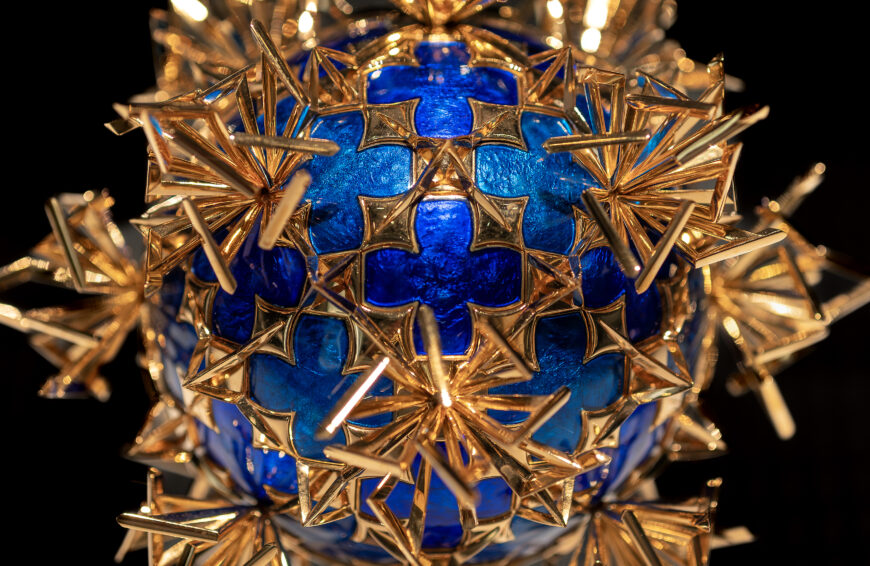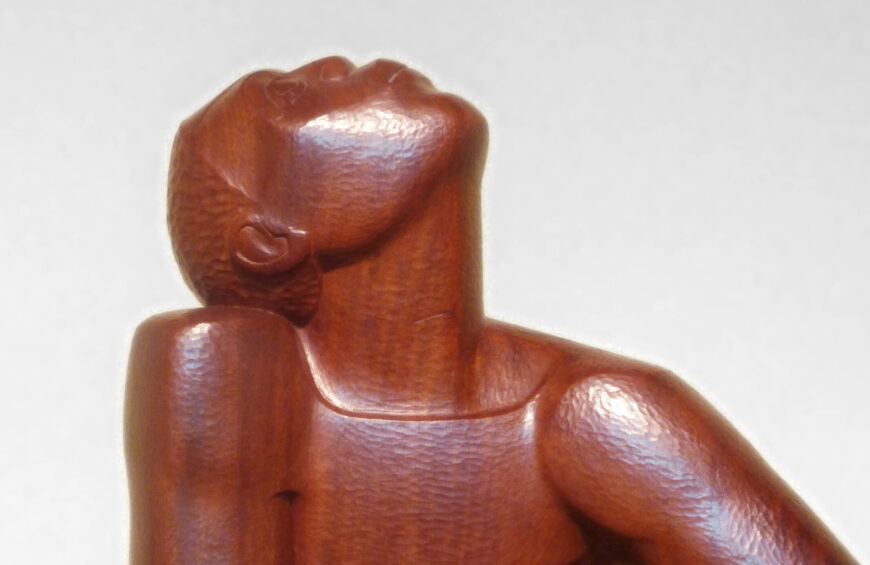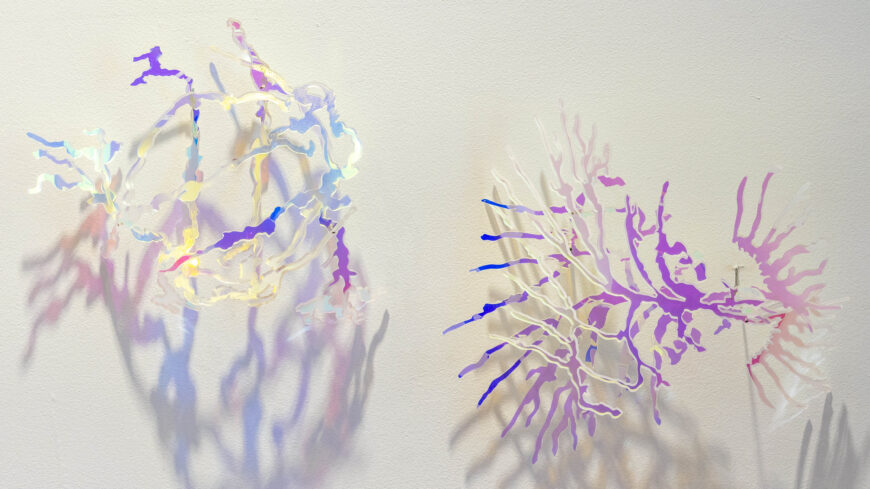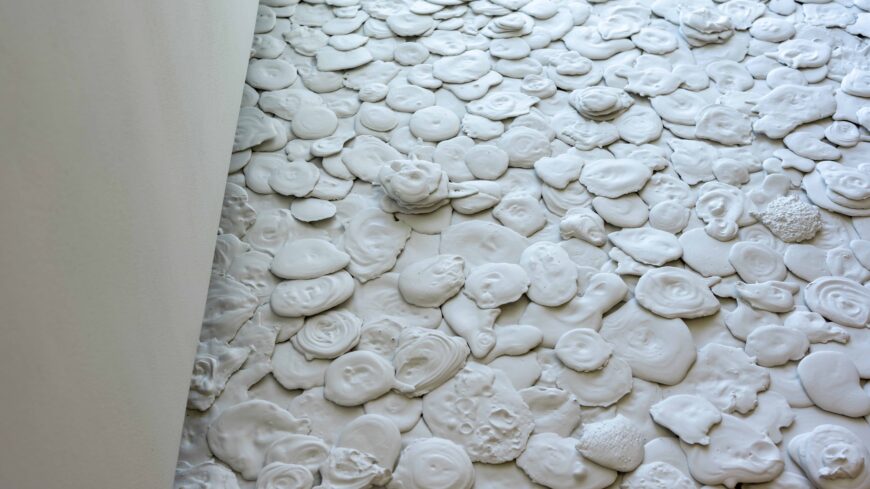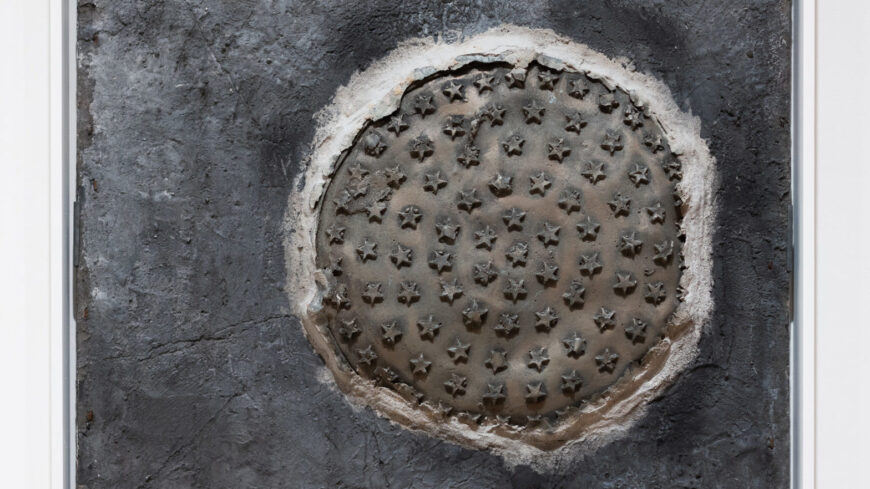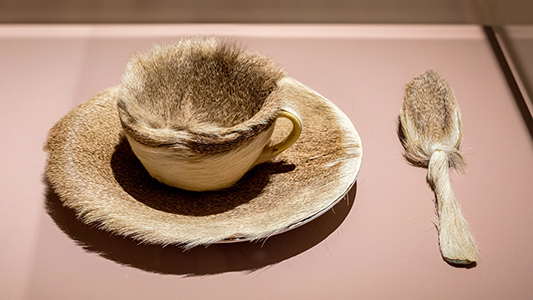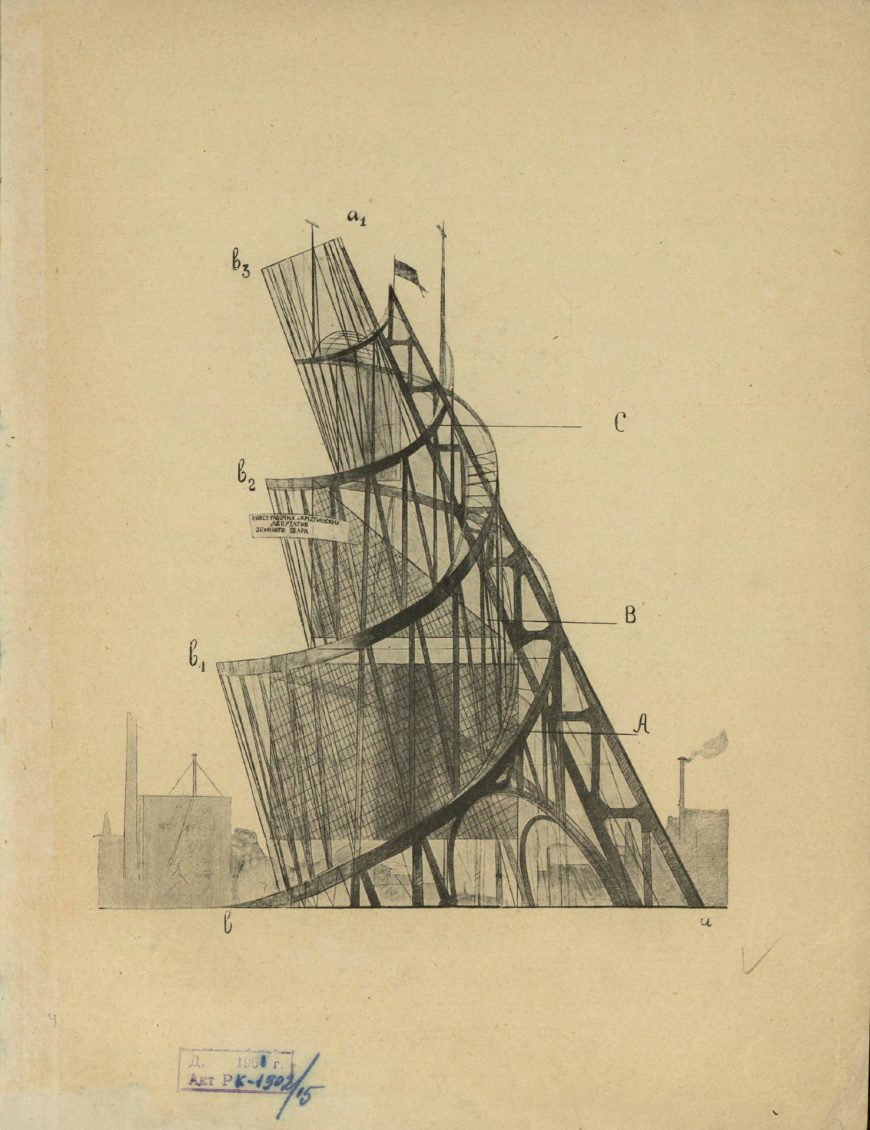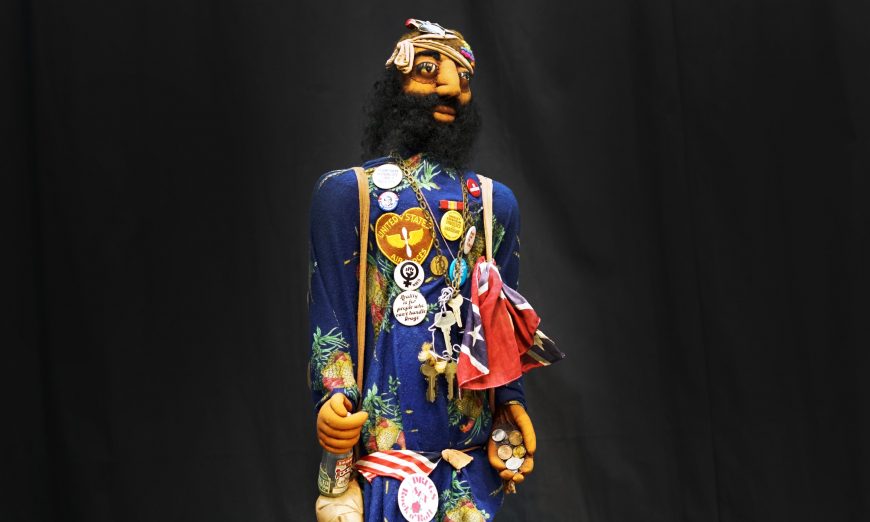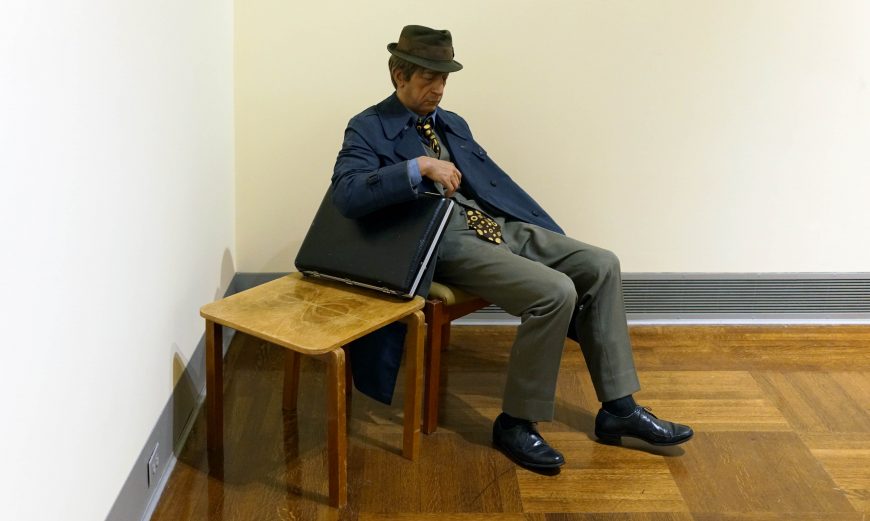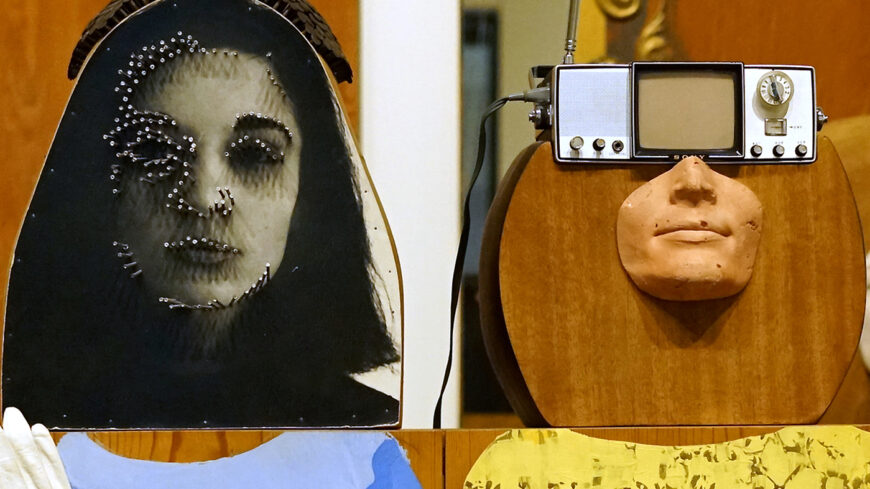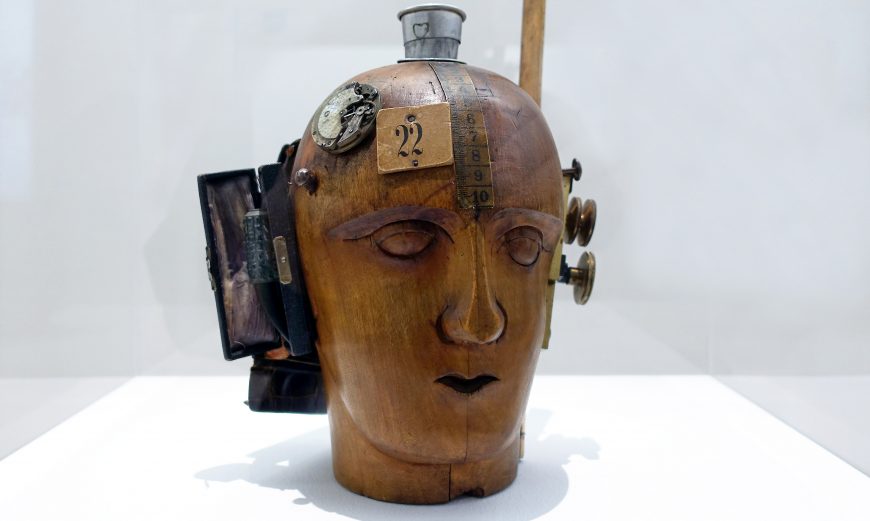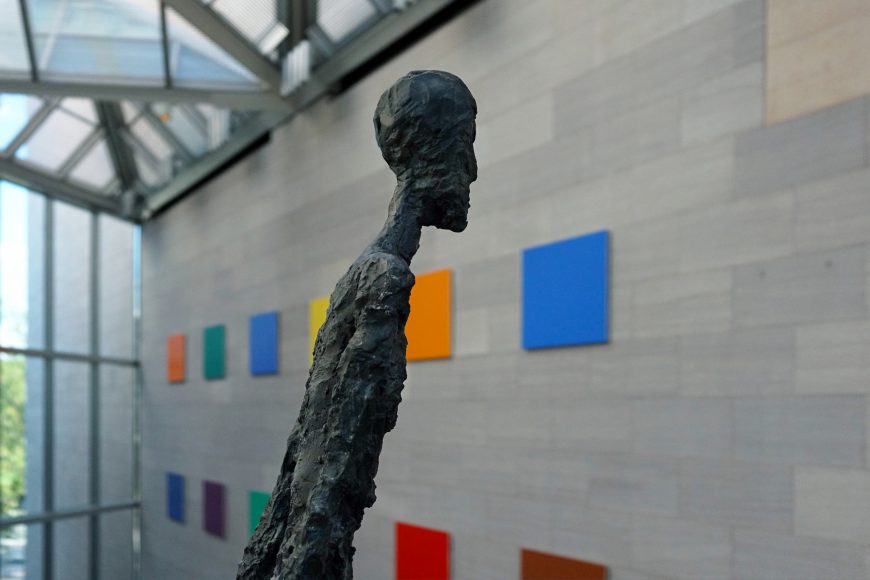Ruth Asawa, Untitled, c. 1958, iron wire, 219.7 × 81.3 × 81.3 cm (Crystal Bridges Museum of American Art, © Estate of Ruth Asawa)
Ruth Asawa, Untitled
[0:00] [music]
Beth Harris: [0:06] We’re here in the galleries at the Crystal Bridges Museum of American Art, looking at a sculpture by Ruth Asawa called “Untitled” from 1958. This is a type of sculpture that the artist made for many years—these biomorphic forms made out of wire.
Allison Glenn: [0:24] This suspended sculpture consists of looped wire and forms within forms.
Beth: [0:30] They suggest to me something like a seed pod, or an embryo in a womb.
Allison: [0:35] The sense I get also is dropping an oil into water with a dropper—the sense of motion where the oil penetrates the water but also collects on the surface in these spherical forms.
Beth: [0:46] So there is a sense almost of unfolding time here.
Allison: [0:49] There’s an interesting tension that’s created—wire itself is malleable to a certain point but here it has a sense of weightlessness. It seems very light and airy, and the sculpture seems delicate.
Beth: [1:01] When you think about wire, you think about something…
Allison: [1:04] That’s tough and durable.
Beth: [1:05] And hard on the hands too. In fact I think she had to wear gloves when she worked with it. This is a mundane and even ugly material that she’s transformed into something…
Allison: [1:16] That’s beautiful and weightless.
Beth: [1:17] While we’re looking at this sculpture here in the galleries, we see the shadows that it creates on the wall behind it. We see these circles within circles overlapping one another.
Allison: [1:28] One of the things that’s really interesting about Asawa’s practice is, she studied under Josef Albers at Black Mountain College.
Beth: [1:34] In the 1940s and 1950s, Black Mountain College was this amazing hub of artistic creativity. This is an experimental college in North Carolina and you have immigrants, you have people coming over, like Albers, from Europe. People are fleeing Nazi persecution and setting up shop here.
Allison: [1:53] What Black Mountain did different is focus on experimentation. The goal was not to train artists to sell artworks or to fill galleries. People like Albers were joined by Buckminster Fuller, Merce Cunningham, Jacob Lawrence— he was actually an artist in residence at that time. Robert Rauschenberg was studying at Black Mountain.
[2:11] Asawa comes out of this larger modernist tradition that is ridden in experimentation.
Beth: [2:18] We’re talking about this period during and immediately after the Second World War, and when we think about the second World War, we often think about Europe and the rise of Nazi Germany. But there’s another theater for World War II and that’s in the Pacific.
[2:33] Asawa grows up on the West Coast as a Japanese American, and often art historians see her use of wire as being part of her experience in an internment camp here in Arkansas. Asawa was one of more than a hundred thousand people of Japanese descent who were forcibly removed from their homes, from their jobs, from the West Coast, and relocated basically in prisons, in internment camps.
[2:59] There was this hysteria around Japanese Americans and this fear that they were a danger to national security after the bombing of Pearl Harbor.
Allison: [3:09] The internment camp where she lived was surrounded by barbed wire and guard towers. Often when we are talking about artists that are marginalized — artists that happen to be women, artists of color—art history tends to explain artworks through the lens of their biography. Quite often histories of trauma are mapped onto these artists’ practices.
[3:32] While Asawa did spend time at two different internment camps—one in California and one here in Arkansas—the real foundation for this work is a summer she spent in Mexico, teaching students. She was teaching art in Mexico and she learned how to make woven wire baskets from villagers.
Beth: [3:52] We’re seeing this sculpture today in the gallery by itself. But these were often seen together, in groups as an installation.
Allison: [3:58] The artist actually preferred to have her sculptures grouped together.
Beth: [4:03] Often we think about going to a museum and looking at paintings on a wall, or bronze sculptures we walk around. That’s our definition of art. But in mid-century in the United States, that definition began to change.
Allison: [4:16] That shift in the mid-20th century is asking the viewer to be in the space with the objects. So museum-going becomes a much more immersive experience.
Beth: [4:24] A much more participatory experience.
Allison: [4:24] Absolutely.
Beth: [4:29] In my mind, that makes it all the more pleasurable.
[4:32] [music]
| Title | Untitled |
| Artist(s) | Ruth Asawa |
| Dates | c. 1958 |
| Places | North America / United States |
| Period, Culture, Style | Modernisms |
| Artwork Type | Sculpture |
| Material | Iron |
| Technique | Weaving |
Learn more about this work from Crystal Bridges Museum of American Art
Learn more about Black Mountain College
See official documents and government photographs about life in the internment camps from the National Archives and DPLA
Learn about the legal structures that allowed for Japanese internment
Read some of the publications created by Japanese-American detainees
Key points
- Following the Japanese attack on Pearl Harbor in December 1941, Franklin D. Roosevelt ordered the forced relocation of more than 100,000 Japanese Americans, many of whom were American citizens—among them, Ruth Asawa. These Americans were imprisoned in internment camps, often secured with barbed wire and guard towers.
- Works of art created by artists who come from marginalized groups (including women and people of color), are often explained in terms of their biographies and histories of trauma. While historians have connected Asawa’s use of wire to her time in internment camps, these sculptures are also based on her artistic experiences at Black Mountain College and teaching in Mexico.
- Asawa’s wire sculptures transform a mundane and unattractive material into weightless, organic shapes that create movement. The sculptures, especially when seen in groups, reflect a mid-20th-century shift in the expectations and materials of fine art to create a more immersive and participatory experience.
More to think about
Why do you think art historians have been more inclined to discuss biography and personal life when it comes to the work of women artists than male artists?


